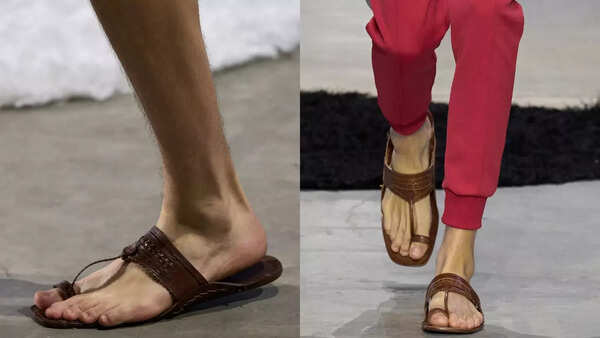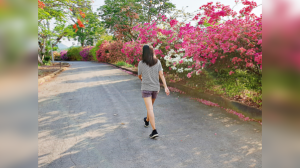Prada has finally recognized that its "new" sandal design bears a striking resemblance to Kolhapuri chappals, a traditional Indian footwear, after facing backlash. The fashion house's initial silence on the inspiration behind the design drew criticism from industry observers and cultural advocates alike.

The controversy began when Prada showcased its Spring-Summer 2026 men’s collection, featuring sandals that closely resembled Kolhapuri chappals, the iconic handmade leather footwear from Maharashtra. However, the brand made no mention of the Indian inspiration, simply referring to them as "leather sandals" in the show notes.
Lalit Gandhi, president of the Maharashtra Chamber of Commerce, Industry and Agriculture, was among the first to speak out. He emphasized the cultural and artisanal significance of Kolhapuri chappals, which have a Geographical Indication (GI) tag since 2019.
In a subsequent letter to Gandhi, Lorenzo Bertelli, head of CSR at the Prada Group, acknowledged the "inspiration" behind the sandals. He admitted that the design was influenced by traditional Indian handcrafted footwear with "a centuries-old heritage." Bertelli also clarified that the collection is still in its early design phase and has not yet entered production or been offered for sale.
Prada's representative further stated the company's respect for Indian craftsmanship and expressed interest in exploring collaborations with local artisans in the future.
While Prada's acknowledgement is a welcome step, Gandhi's core message remains crucial: cultural exchange in fashion must involve proper credit and collaboration. It is essential to recognize the origins of designs and support the communities that have preserved these traditions.
This incident raises important questions about cultural appropriation in the fashion industry. True progress requires brands to actively uplift traditional crafts, rather than merely repackaging them for profit. A genuine commitment to collaboration and recognition could mark a significant step forward.
Newer articles
Older articles
 Black Caps Announce Packed 2025-26 Home Schedule Featuring Australia, England, West Indies & South Africa
Black Caps Announce Packed 2025-26 Home Schedule Featuring Australia, England, West Indies & South Africa
 Jaiswal Aims to Eclipse Gavaskar's 49-Year-Old Record as India Seeks Series Leveler at Edgbaston
Jaiswal Aims to Eclipse Gavaskar's 49-Year-Old Record as India Seeks Series Leveler at Edgbaston
 Rishabh Pant: Greg Chappell Lauds Indian Star's Game-Changing Cricket Revolution
Rishabh Pant: Greg Chappell Lauds Indian Star's Game-Changing Cricket Revolution
 Samsung Unveils Galaxy A35 5G and A55 5G Pricing, Specs, and Availability
Samsung Unveils Galaxy A35 5G and A55 5G Pricing, Specs, and Availability
 5 Silent Signals: Spotting Prediabetes Without a Blood Test
5 Silent Signals: Spotting Prediabetes Without a Blood Test
 Cummins Lauds Australia's Solid Start in New World Test Championship Campaign
Cummins Lauds Australia's Solid Start in New World Test Championship Campaign
 Science-Backed Strategies: 5 Simple Habits for a Healthier Heart
Science-Backed Strategies: 5 Simple Habits for a Healthier Heart
 Anish Giri's Jesting Remark Highlights Praggnanandhaa's Rise to Top Junior Chess Ranking
Anish Giri's Jesting Remark Highlights Praggnanandhaa's Rise to Top Junior Chess Ranking
 India vs England: Calls Mount for Kuldeep Yadav's Inclusion in Edgbaston Test Amid Strategic Reworking
India vs England: Calls Mount for Kuldeep Yadav's Inclusion in Edgbaston Test Amid Strategic Reworking
 The subtext of Gill's selection
The subtext of Gill's selection